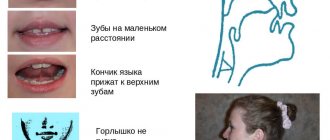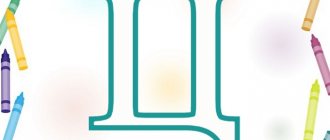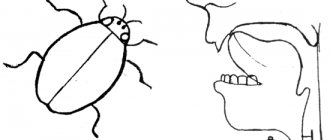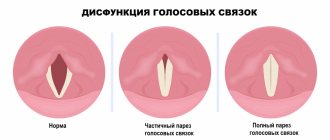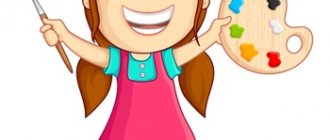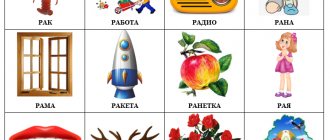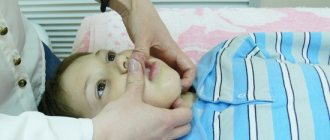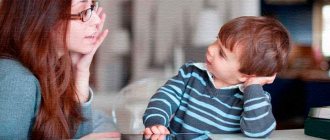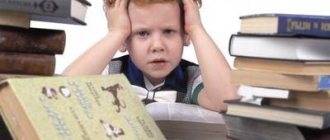Articulation gymnastics in simple exercises
The most common cause of difficulties in producing the sound [P] is a sedentary articulatory apparatus, that is, weakness of the facial muscles and speech organs. Articulation gymnastics is a great way to overcome these difficulties. It is recommended to practice it with your child every day and use it as a warm-up before making sounds.
Articulatory gymnastics for the sound [P] is essentially simple grimacing and antics. The child will have to stick out his tongue, make faces, make funny sounds, and so on. It is not difficult to turn such gymnastics into a fun, exciting game; any child will very quickly fall in love with these activities.
IMPORTANT! Don't neglect the gaming component of the lesson! A passionate and interested child will perform all exercises more actively and diligently than a bored and dissatisfied child.
Brush. The child smiles widely and opens his mouth. Then, as if with a paint brush, he begins to stroke the palate from the upper teeth as deep into the throat as possible. Repeat 10–15 times.
Pendulum. Smiling, the child sticks out his tongue and moves it from side to side, from one corner of the lips to the other. Repeat 10–15 times.
Harmonic. The child smiles, opens his mouth slightly and presses his tongue to the upper palate. Then he opens his mouth as wide as possible, without lifting his tongue from the roof of his mouth. Closes his mouth and opens it again. Repeat 15–20 times.
Toothbrush. The child smiles, opens his mouth slightly and runs his tongue along the upper teeth from the inside from left to right, 10–15 times. After which the child rests his tongue on each front tooth in turn, without changing the original position.
Causes of functional dyslalia
Somatic Physical and neurological weakness due to long-term chronic diseases of the body (indigestion, frequent colds) Social
- Pedagogical neglect (parents do not correct deficiencies in their children’s speech and do not demonstrate examples of correct sound pronunciation).
- Bilingualism in the family (When parents speak different languages, the child inserts another into one language. For example, French + Russian = throat sound “R”).
- A sample of incorrect speech in a child’s environment (by imitation).
Incorrect articulation Selecting incorrect articulation Underdevelopment of phonemic hearing Physical hearing can be preserved, but phonemic hearing is impaired.
Forms of dyslalia
Monomorphic (simple) One sound or several sounds from one group suffers (S-Z-C or Sh-Zh-Ch). Polymorphic (complex) Several sounds from different groups suffer (S-R-K-SH). Physiological (age-related) Sound pronunciation disorders up to 5 years of age, caused by insufficient development of articulation organs. After 5 years it goes away on its own. This is the only form of dyslalia that is present in all people at some stage of development. Functional Impairment of sound pronunciation in the absence of deviations in the articulatory apparatus and the functioning of the central nervous system, auditory and peripheral articulatory apparatus. The ability to voluntarily accept and maintain certain positions of the articulatory organs necessary for pronouncing sounds is impaired. Violation of sound pronunciation may be associated with the inability to distinguish and differentiate phonemes. Quite often, isolated use of a sound may not be disrupted, but changed in spontaneous speech. The degree of severity is determined by the severity of the defect and the number of disturbed sounds. Organic (mechanical) Caused by hereditary, congenital or acquired anatomical defects of the peripheral articulatory apparatus (malocclusions - progeny, prognathia, “thick” tongue, short frenulum, etc.).
